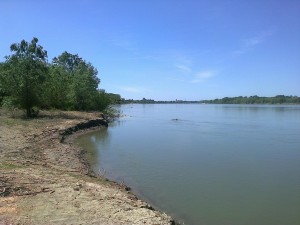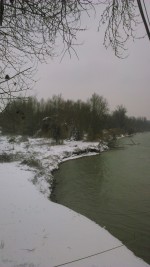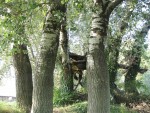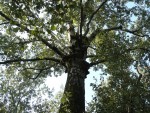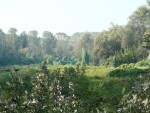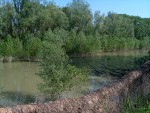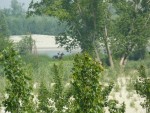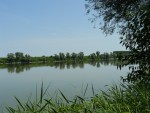Isola Bianca (White Island)
Isola Bianca (White Island) is an example of a river island, formed in a curved bank of the Po. It is home to over 70 species of birds, mammals and numerous amphibians. The area has been a protected oasis since 1986.
History
This river island of nearly 36 hectares was formed in a curved bank of the River Po between the towns of Francolino and Pontelagoscuro.
Some historic sources testify to its existence as far back as the late Middle Ages, but the 1580 map of the Este States by Marco Antonio Pasi (now at Modena’s University Library) does not include it. However, the 1762 maps by Andrea Chiesa do show an island, though it is closer to the Veneto side of the Po. Finally, in the ‘Napoleonic’ map from 1814, a large sandy island appears at the centre of the river, with a tree-covered portion close to the riverbank on the Emilia side.
This wooded nucleus probably expanded, with the roots of the plants collecting the sediment of the river, gradually growing and surviving up to today.
All the maps mentioned above can be freely viewed in a dedicated section of the website of the Emilia-Romagna Region.
The flora and fauna of Isola Bianca
Today, Isola Bianca is a place rich with flora and fauna. In 1986, the Province and Municipality of Ferrara named the area a natural oasis, protecting its wildlife. In 1991, the Italian Bird Protection League (LIPU) took over management of the site and, bit by bit, the natural oasis was extended to the nearby floodplains, covering the current 360 hectares. For many years, LIPU led guided tours on the island, until the river’s frequent flooding caused them to be suspended.
When water is scarce in the Po, the island is connected by land to the floodplain. Of course, all visitors to the island must fully respect the plants and animals that live in the oasis. The forest on the island is made up of English oak, mulberry, Black locust, white poplar, black poplar, elm and white willow trees - i.e. vegetation that often makes up ‘tree tunnels’ over rivers. The island is home to 70+ species of birds, including a few birds in the heron family (little egrets, grey herons, etc.), which nest in its trees. Mammals on the island mostly include small rodents and insect-eating animals, while amphibians include green frogs, agile frogs, European tree frogs, common toads and European green toads. Reptiles include grass snakes, western green lizards, and Italian wall lizards. In addition, a protected species of European pond turtle (Emys orbicularis) calls the oasis home.
On the floodplain of Isola Bianca, near the town of Francolino, stands a large poplar tree, counted among the monumental trees of Emilia-Romagna.
Note
- Le foreste a galleria sono formate dagli alberi che crescono sulle due sponde di un fiume: le chiome tendono a congiungersi sopra l'acqua formando una sorta di galleria.
- Tutte le carte storiche citate sono liberamente consultabili in un’apposita sezione del sito web della Regione Emilia-Romagna (http://www.mokagis.it/html/applicazioni_mappe.asp)
Bibliography
- Fabbri Roberto, Corazza Carla, Coleotteri Cerambicidi delle Golene del Fiume Po (Coleoptera Cerambycidae) in Quaderni della Stazione di Ecologia, Civico Museo di Storia Naturale di Ferrara, 19 2009 , pp. 107-112 Vai al testo digitalizzato
- Pellizzari Mauro, La vegetazione del Po Ferrarese da Porporana all'Isola Bianca in Quaderni della Stazione di Ecologia, Civico Museo di Storia Naturale di Ferrara, 19 2009 Vai al testo digitalizzato
- Corazza Carla, I Ditteri Sirfidi nella Bioindicazione della Biodiversità. I Sirfidi, il database Syrph the Net e una chiave dicotomica ai generi dei Sirfidi italiani, in Bertollo Silvia, Corazza Carla, Sommaggio Daniele, Speight Martin C.D., Quaderni della Stazione di Ecologia, Civico Museo di Storia Naturale di Ferrara, 20 2012 Vai al testo digitalizzato
Sitography
Fototeca
Related places
Compiling entity
- Museo Civico di Storia Naturale di Ferrara

